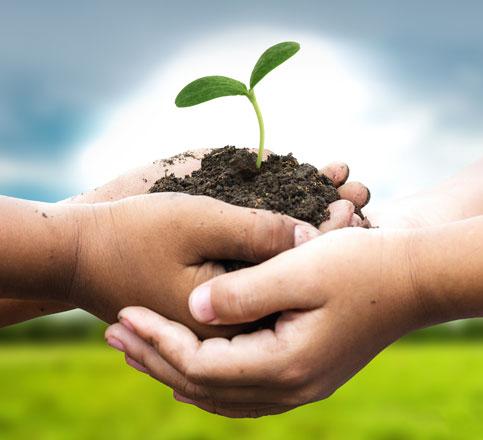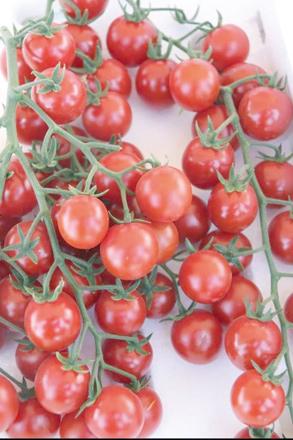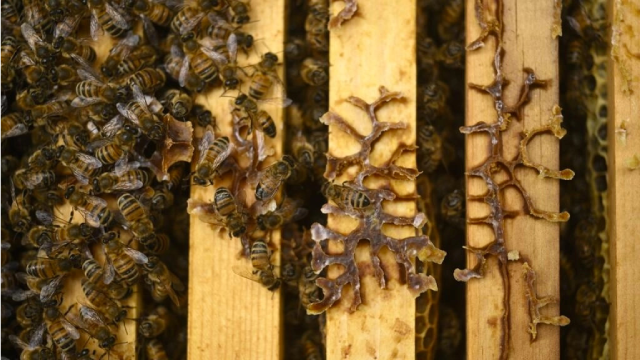You are here
Organic agriculture can help feed the world
By Los Angeles Times (TNS) - Nov 26,2017 - Last updated at Nov 26,2017

Agriculture could go organic worldwide if we slashed food waste and stopped using so much cropland to feed livestock, a new study finds.
The analysis, published in the journal Nature Communications, shows that it will take several strategies operating at once to feed the growing human population in a more sustainable way — and some of those strategies may require people to shift their dietary patterns, too.
The world’s population is expected to hit 9.8 billion by 2050, which means an extra 2 billion or so mouths to feed. This will require increasing agricultural output by an additional 50 per cent, the study authors wrote — which is made an even greater challenge as dietary patterns have been changing and the demand for meat has been rising. (Raising livestock leaves a large carbon and water footprint relative to growing plant-based foods.) All of this puts an additional strain on an already taxed environment.
“It is, therefore, crucial to curb the negative environmental impacts of agriculture, while ensuring that the same quantity of food can be delivered,” the study authors wrote.
Experts have thrown out several strategies to deal with the impending food security problem, without coming to a clear agreement on which one would be best. Among the options: improving efficiencies in producing crops and using resources; reducing food waste; cutting down the animal products we eat; or resorting to more organic agriculture.
“Organic agriculture is one concrete, but controversial, suggestion for improving the sustainability of food systems,” the study authors wrote.
“It refrains from using synthetic fertilisers and pesticides, promotes crop rotations and focuses on soil fertility and closed nutrient cycles.”
Regardless of whether organic fruits, vegetables and other crops are better for you, there’s evidence showing they may be better for the environment. Since organically grown crops can’t use synthetic nitrogen fertiliser, it means that less excess nitrogen acidifies the soil and ends up in waterways, or escapes into the air as a greenhouse gas. It also means no man-made pesticides, meaning fewer chemicals in the local environment and less risk to insect biodiversity — which is important because many insects are crucial players in their local ecosystems.
But those benefits are offset somewhat by what’s known as the yield gap: the idea that organic crops require more land because their yields are lower than the fertiliser-fed, pesticide-protected conventional crops — potentially resulting in some extra deforestation. Still, could organic crops allow future food needs to be met with less environmental impact?
“Because of the yield gap, there are opposing voices that say it’s not possible… [and] there are proponents that say this yield gap is not really important and one could overcome it,” said lead author Adrian Muller, an environmental systems scientist at the Research Institute of Organic Agriculture in Switzerland.
“We just wanted to look at it from a food-systems perspective, because we think only looking at the yield gap is not enough. It is important to really look at production and consumption together and to see what organic agriculture can contribute on such a food-systems level.”
To find out, Muller and colleagues developed models based on data from the Food and Agriculture Organisation of the United Nations, looking at the effects that going organic would have under different scenarios, modulating the severity of climate change, the amount of food waste and the share of crops used to feed livestock instead of people, for example.
The researchers found that the human population’s needs could be fully met by all-organic agriculture — but only if food waste was cut in half and the competing feed sources for livestock were eliminated altogether. Since that would seriously scale back the amount of livestock, that might be a hard sell with today’s meat-filled diets.
Muller said a more feasible solution might be one where organic crops make up about 50 per cent of crops, food waste is cut by half, and the competing feed sources are cut by half (allowing for more acreage to grow human food).
“We need to utilise all the potential strategies we have, without supporting one extreme and leaving out other approaches,” he said.
Getting to that point may still be a challenge. Organic crops make up a tiny fraction of agriculture overall, nowhere near that 50 per cent target. But there are some things that can be done now, Muller pointed out, such as putting an extra “nitrogen tax” on producers so that the environmental cost of excess fertiliser becomes an economic one.
“I think we are moving in the right direction,” Muller said, “and as an optimist I think, yeah, somehow, it will work”.
Related Articles
AMMAN — Organic farming is making inroads into Jordan’s conventional agriculture system as many are encouraged to adopt environmentally frie
PARIS — “Go pee on the rhubarb!”Engineer Fabien Esculier has never forgotten his grandmother’s unconventional approach to gardening —
QUIMPER, France — Bees pollinate 71 of the 100 crop species that provide 90 per cent of food worldwide.



















